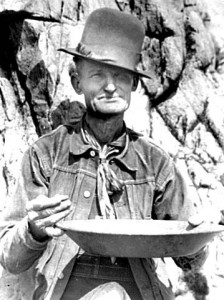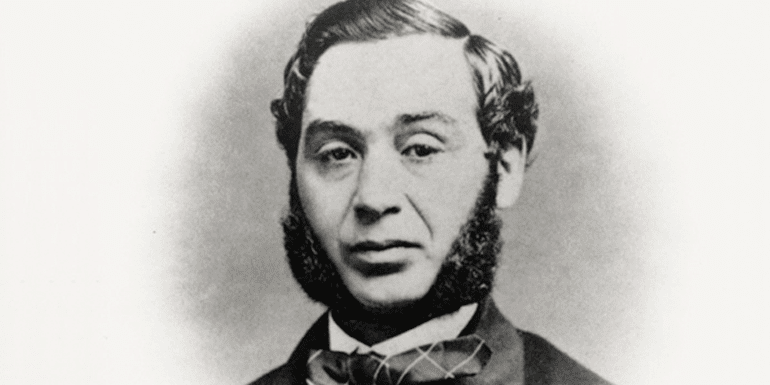The man behind the brand myth
The history of the five pocket blue jean and how they came to be is the story of Levi Strauss. But the story of this pioneering dry goods merchant is littered with numerous myths and anecdotes. With this article we uncover some of these myths.
The man, Levi Strauss, founded one of the key enterprises of the clothing industry in recent times. With roots back to the 1850s, the story of Levi Strauss & Co., often appreciated LS&CO., has for many decades been synonymous with the history of jeans.
Throughout it’s existence, the company has marketed itself heavily on its central historical position, which to some extent is based on the myths, and as a consequence has created one of the industry’s strongest brands. But let’s start at the beginning.
The Humble beginnings
No matter how we look at it, a pair of jeans will undeniably smell a bit of gold mines and conjure images of the tough rebel.
Part of what continues to fascinate and inspire denim consumers around the globe is the story of how the product came to be. It all started in 1847 when Loeb Strauss, an 18-year-old emigrant from Bavaria, Germany, came to the United States with his mother and three sisters.
Strauss spent the first couple of years in New York where he worked for his two older brothers, Jonas and Louis, who under the name J. Strauss Brother & Co. had opened a wholesale company that specialized in dry goods (textile products).
Here, young Loeb quickly learned how to succeed in the industry and around 1850 he became known among family and customers as “Levi.”
Heading West
At the end of January 1853, Strauss received U.S. citizenship and in February 1853 he traveled to San Francisco to seek his fortune in the wake of the Gold Rush.

Originally conceived as a west coast branch of the family business, he started a company under his own name. Sadly, records of the fate of Levi’s brothers are missing from this point on.
We know that Straus imported a wide range of dry goods. He brought in clothing, underwear, umbrellas handkerchiefs and raw fabrics and resold them to the many shops that had sprung up after due to the gold rush.
David Stern, who was married to Strauss’s sister, joined the company in the mid-1850s. In 1863 the name was changed to “Levi Strauss & Co.” After several relocations, in 1866 the San Francisco headquarters moved to Battery Street 14-16.
It remained there for the next 40 years. When David Stern died in 1874, he left four sons who all joined the company. Their descendants still own Levi Strauss & Co. to this day.
The birth of a legend
It was not until the early 1870s that Levi’s became directly associated with jeans. Before this they concentrated on the wholesale business. Levi Strauss was approached by a tailor from Nevada, Jacob Davis.
Davis had the unique idea to reinforce pockets and other exposed areas of the pants with copper rivets, a method he had used on horse blankets prior to seeing the application in pants. You can read more about Davis here.
The iconic five-pocket jean was born. At this time they were simply known as the “Riveted Overall”
The reason for the Levi myths
Levi Strauss died in September 1902 and left no heirs. Over the years Strauss had been involved and committed in the community of San Francisco, and he was known as one of the city’s biggest philanthropists.
A definitive event in the history of Levi Straus & CO., and the history of jeans, dates back to 1906 when San Francisco was hit by a severe earthquake and subsequent fires.
 Throughout the Gold Rush in the second half of the 19th century the town was hit by several earthquakes, but the major earthquake in 1906 was the greatest of them all. The disaster caused massive damage to Levi Straus & CO.’s headquarters and factories around the city Almost all archives, patent papers, factory equipment and photographs were lost. All written history from the first era of the company disappeared.
Throughout the Gold Rush in the second half of the 19th century the town was hit by several earthquakes, but the major earthquake in 1906 was the greatest of them all. The disaster caused massive damage to Levi Straus & CO.’s headquarters and factories around the city Almost all archives, patent papers, factory equipment and photographs were lost. All written history from the first era of the company disappeared.
It has been difficult for historians and denim hunters to determine how the original jeans really looked and who actually invented them.
With the destruction of the company records, a breeding ground for the numerous myths, anecdotes was created. There are many stories associated with Levi’s brand, many of them contradictory.
It is doubtful we will ever know the true tale of Levi Strauss’s personal history and perhaps more importantly, the origin of the famous and groundbreaking 501XX jeans.



1 comment
I used to be recommended this blog by way of my cousin. I am not
sure whether or not this post is written by way of
him as nobody else realize such unique about my problem.
You are incredible! Thanks!
My page vpn special code